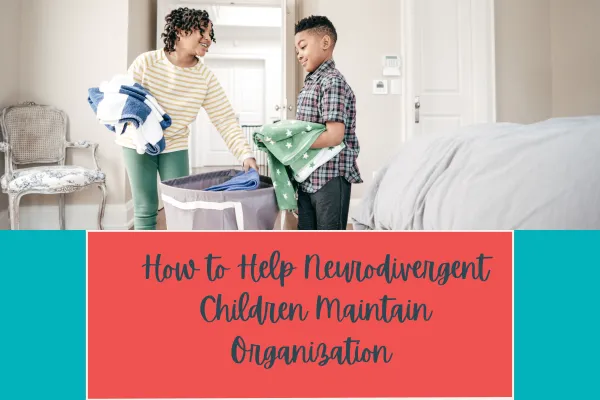Harmony in
Neurodiversity
THE BLOG
Welcome to Harmony in Neurodiversity, a blog dedicated to exploring the profound impact of music and positive parenting strategies on the lives of neurodivergent individuals. Join Samantha, a board-certified Neurologic Music Therapy fellow and a passionate Positive Discipline Parent Educator, as she shares her expertise in leveraging the power of music and effective parenting approaches to support and empower neurodiverse communities.
In her blog posts, Samantha delves into the intricate connections between music and the brain. She explores how specific musical elements and interventions can enhance cognitive functions, regulate emotions, improve communication, and promote social interaction among neurodivergent individuals. Through insightful articles and case studies, she demonstrates how rhythm, melody, and lyrics can serve as powerful tools for therapeutic interventions, fostering growth and self-expression.
Positive Discipline Parenting Strategies:
Drawing from her expertise as a Positive Discipline Parent Educator, Samantha sheds light on nurturing positive relationships between parents and neurodivergent children. Her blog offers practical advice, evidence-based strategies, and real-life anecdotes that empower parents and caregivers to cultivate respectful, encouraging, and effective parenting techniques. From setting clear boundaries to fostering a supportive environment, Samantha guides readers in navigating the challenges and joys of parenting neurodiverse children.
Exploring Intersectionality:
Samantha doesn't limit her discussions to singular approaches. Instead, she delves into the intersectionality of Neurologic Music Therapy and Positive Discipline Parenting, illustrating how these methodologies complement each other. Through her insightful content, she showcases how the harmonious integration of music-based interventions and positive parenting strategies can create holistic support systems for neurodivergent individuals, promoting their well-being and personal growth.
Community Engagement and Resources:
Additionally, Samantha fosters a vibrant online community where readers can engage, share experiences, and seek advice. She curates a wealth of resources, including recommended readings, workshops, and practical tools, empowering her audience to implement valuable insights into their lives effectively.

How to Help Neurodivergent Children Maintain Organization
How to Help Neurodivergent Children Maintain Organization
When I was a child, my mom asked me to clean my room, which took ALL DAY LONG. I didn’t just pick up my room; I had to organize everything. I would get distracted by all the things and start playing with them. After I took everything and organized part of it, I lost motivation. I was so overwhelmed with everything that I just didn’t do anything. It took my mom coming in and helping me or saying I couldn’t go to my friend’s house to motivate me to finish cleaning finally.
Spoiler alert: this is still happening to this day. When I clean, I get so distracted. I also get super motivated and get everything out to organize it. Then I lose motivation and just stare at everything, overwhelmed. That’s what ADHD does for you.
As a child, I always had grand plans to stay organized and keep everything clean, but that never happened. So, how can we help our neurodivergent children stay organized and clean their spaces? Here are four suggestions:
1. Sit with Your Child
For neurodivergent children, having a supportive adult present as they work can make a significant difference. “Body Doubling,” AKA sitting with your child as they work, can provide the necessary encouragement and guidance they need. This direct involvement helps them feel less overwhelmed and more capable of managing their tasks. It's not just about supervision; it's about engaging with them, understanding their process, and offering help when needed. Doing this can help the child feel secure and make the task more manageable and less intimidating.
2. Implement a Visual Schedule
Neurodivergent children often benefit immensely from visual aids, which help them understand and manage their time and responsibilities. A visual schedule can be written, or pictures can be used. You can outline the child’s day or a specific task that they are asked to do. Common visual schedules include bathroom routines and morning/night routines. You can also break down tasks such as cleaning their room. By breaking down the day and tasks into predictable and sequential activities, children can navigate their chores with more confidence and less anxiety. Visual schedules reinforce structure and routine, which are particularly beneficial for children who may struggle with transitions or staying on task.
3. Provide Step-by-Step Instructions
Breaking tasks into smaller, manageable steps is another effective strategy for helping children with ADHD and autism. For example, when a child is asked to clean their room, you can break down the task into smaller steps such as “put all the toys in the bin, place the books on the shelf, put the dirty clothes in the laundry basket.” These instructions help children understand what is expected of them and make the task feel less overwhelming. It also teaches them to approach large tasks systematically, reducing the likelihood of creating "doom piles” (AKA piles of stuff they don’t know what to do with.)
5. Use Positive Reinforcement
Celebrate children’s successes, no matter how small, with verbal praise or another reinforcement that your child likes. This not only boosts their self-esteem but also makes the process of cleaning and organizing more enjoyable and rewarding.
Helping children with ADHD, autism, and other neurodivergent diagnoses to clean up after themselves and stay organized requires patience, understanding, and a tailored approach. By sitting with them, using visual schedules, providing step-by-step instructions, and employing positive reinforcement, you can help them overcome the "doom piles" challenge and lead more organized lives. These strategies aid their immediate environment and equip them with skills that will serve them throughout life.


